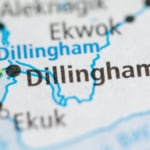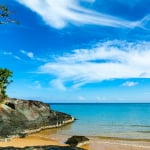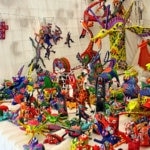The tallest structure within the Senso-ji grounds is the “Five-Storied Pagoda.” This beautiful vermilion pagoda stands about 53 meters tall. Inside the pagoda, there is a “Reihai-den” where memorial tablets of devotees and images of Kannon are enshrined, as well as the “Seibutsu Shari” housing relics of Buddha and a “Jimu-sho” (temple office). Although the interior is not open to the public, the exterior still exudes a sense of grandeur. The pagoda is also beautifully illuminated at night.

Asakusa’s Must-See Attractions at Senso-ji – Explore the Iconic Spots of Tokyo’s Oldest Temple!
Senso-ji, located in Taito-ku, Asakusa, is the oldest temple in Tokyo. It is famously known for having a higher ratio of unlucky omikuji compared to other temples, making “kyo” (bad fortune) more likely to be drawn. However, the main blessing of Senso-ji is “shogan jouju” (fulfillment of one’s heartfelt wishes). When you visit, it is highly recommended to purchase an omamori (charm) to take home. Besides that, Senso-ji is filled with many other attractions. This guide introduces information on Senso-ji, which is conveniently accessible from Asakusa Station.
table of contents
[x] close
Asakusa’s Must-See Attractions at Senso-ji – Explore the Iconic Spots of Tokyo’s Oldest Temple!
1. Kaminarimon
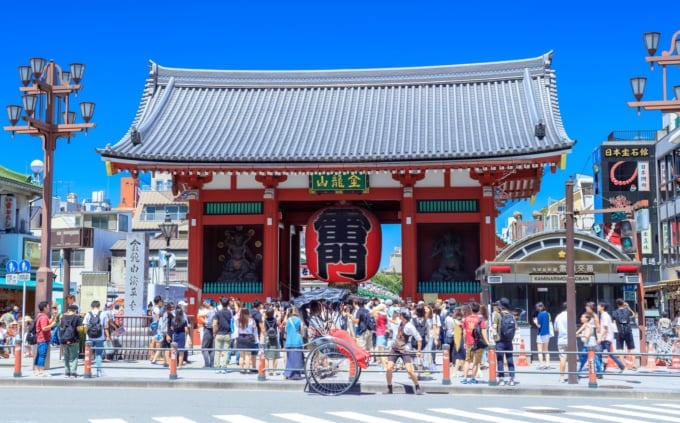
When you think of Asakusa, the symbol is undoubtedly the “Kaminarimon” of Senso-ji. Every day, countless tourists take souvenir photos in front of Kaminarimon. Its official name is “Fūraijinmon” (Gate of Wind and Thunder), and it serves as the main entrance to Senso-ji. As the name suggests, the statues of the Wind God and Thunder God on either side of the gate are believed to protect Asakusa from disasters such as floods and fires.
The exquisitely crafted statues appear as if they might come to life at any moment. The enormous lantern hanging in the center of the gate is 3.9 meters tall, 3.3 meters wide, and weighs about 700 kg. When viewed from below, you can see a dragon carved on the bottom—be sure to check it out.
2. Nakamise-dori
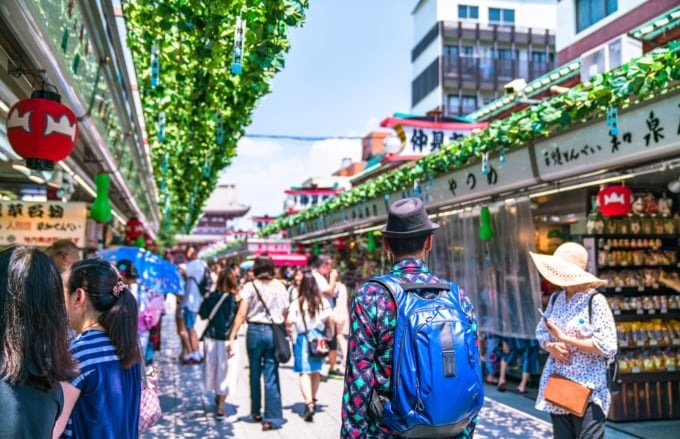
Nakamise-dori is a traditional shopping street that connects Kaminarimon to the Main Hall, preserving the atmosphere of old downtown Tokyo. It is one of the oldest shopping streets in Japan. Lined with shops on both sides, Nakamise-dori is bustling with tourists every day.
The shops here sell various items such as folding fans and other trinkets, as well as local gourmet treats like senbei, ningyo-yaki, and agemanju—many famous Asakusa specialties. One highly recommended shop is “Asakusa Kokonoe,” a specialty store for agemanju that is always in long lines. It is located on the third shop from Hōzōmon, on the opposite side of Kaminarimon. Be sure to stop by.
3. Main Hall
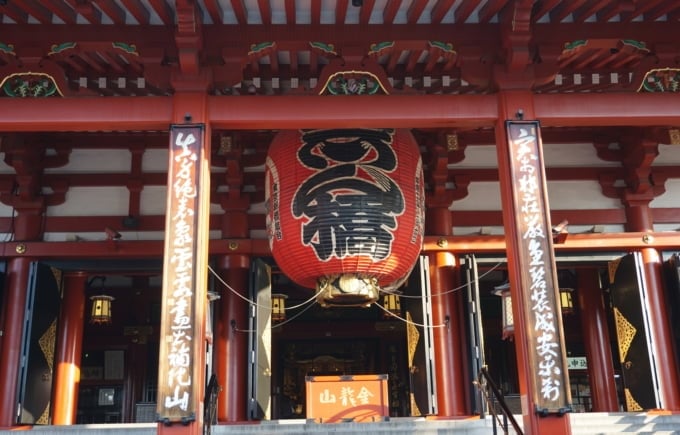
Senso-ji’s Main Hall, also known as “Kannon-do” because it enshrines the bodhisattva Kannon, is equally impressive as Kaminarimon. At the entrance of the Main Hall, there is a large lantern inscribed with “Shinbashi,” which was donated by devotees. The interior of the Main Hall is divided into an outer area and an inner area; the outer area is where many worshipers toss coins and offer prayers, while the inner area, with tatami-matted floors, is less crowded.
Once inside the outer area, look up at the ceiling to see the “Dragon Picture” depicting a dragon and the “Celestial Beings Picture” depicting heavenly figures. Although many think that the inner area is “off-limits,” in reality, anyone can enter after removing their shoes—so feel free to explore.
4. Hōzōmon
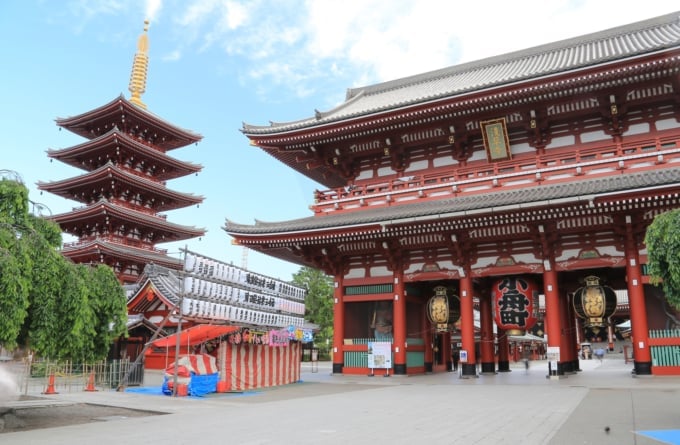
Walking along Nakamise-dori from Kaminarimon towards the Main Hall, you will encounter another popular photo spot where many tourists gather: the “Hōzōmon.” With statues of Niō guarding either side of the gate, it is also known as “Niōmon.” A highlight is the large straw sandal that hangs behind Hōzōmon, said to represent the power of the Niō deities and to scare away evil spirits.
5. Five-Storied Pagoda
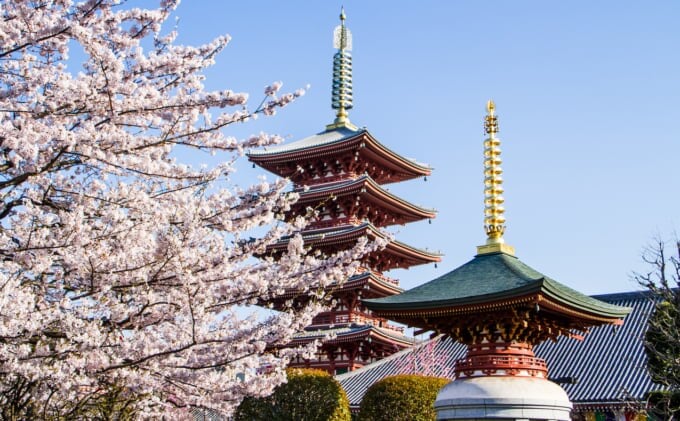
6. Nadebotoke
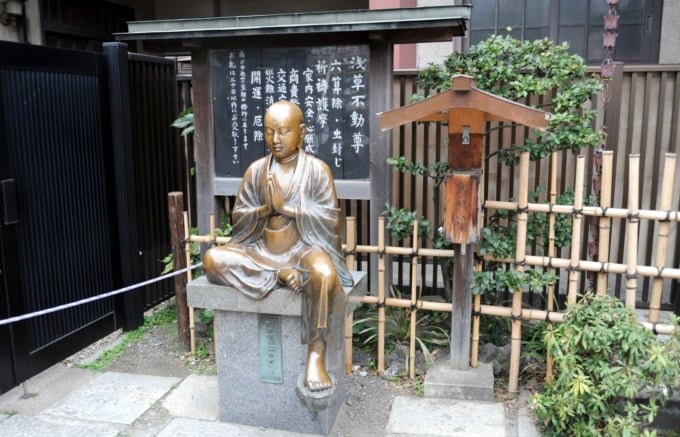
Many tourists move straight from Nakamise-dori through Hōzōmon to the Main Hall, often missing a quiet spot known as “Nadebotoke.” Nadebotoke is located on the left side, near the “Asakusa Fudōson” just before you pass through Hōzōmon. It is said that gently stroking the spot corresponding to the part of your body that feels unwell will help relieve your ailments. Be sure to try stroking Nadebotoke.
7. Other Recommended Attractions Nearby
Asakusa Culture and Tourism Center
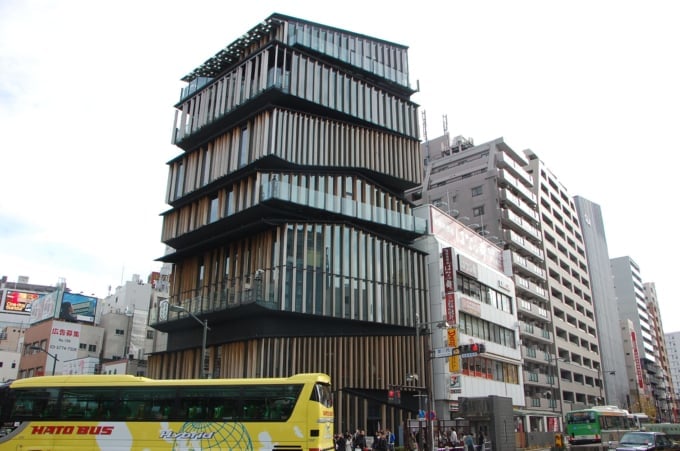
Across the road from Kaminarimon stands a distinctive building: the Asakusa Culture and Tourism Center. This public facility features floors dedicated to introducing the history and culture of Asakusa, along with a rest area and a tourist information center that offers service in Japanese, Korean, Chinese, and English. There is also a currency exchange. If you are visiting Asakusa for the first time or need a break, this is a great place to stop by.
On the 8th floor, there is an observation terrace. From here, you can view the entire Senso-ji complex—from Kaminarimon through Nakamise-dori to the Main Hall—as well as Tokyo Skytree. It is a recommended spot for taking a break.
Name: Asakusa Culture and Tourism Center
Address: 2-18-9 Kaminarimon, Taito-ku, Tokyo
Hours: 9:00–20:00 / 9:00–22:00 (Observation Terrace) / 10:00–20:00 (8th Floor Café)
Admission: Free
Official Site: http://www.city.taito.lg.jp/index/bunka_kanko/oyakudachi/kankocenter/a-tic-gaiyo.html
Marugoto Nippon
Opened in 2015, “Marugoto Nippon” is a new tourist attraction in Asakusa where you can find regional specialties from across Japan. The facility gathers shops selling various items such as handicrafts, alcohol, and sweets. The top floor features a restaurant area where you can enjoy exquisite local gourmet dishes, often with long lines on holidays. Additionally, there are cooking classes where you can learn about local food culture.
Just wandering around the facility gives you a sense of exploring the entire region—it’s a recommended spot for souvenir shopping.
Name: Marugoto Nippon
Address: 2-6-7 Asakusa, Taito-ku, Tokyo
Hours: 1F & 2F: 10:00–20:00 / 3F: 10:00–21:00 / 4F: 11:00–23:00 (Last Order 22:00)
Admission: Free
Official Site: https://marugotonippon.com/
◎Finally: Beware of Crowds on Holidays
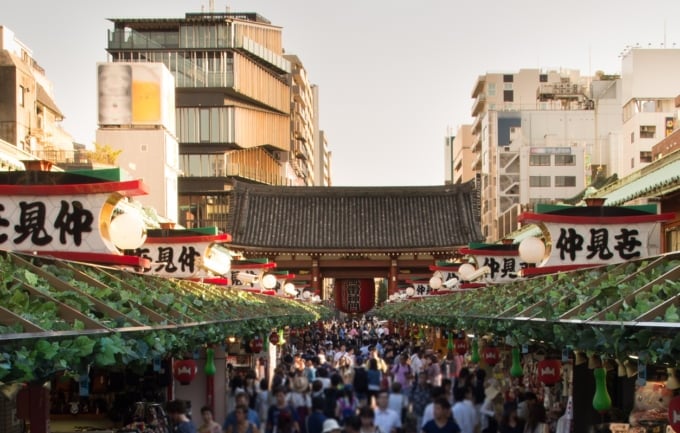
Senso-ji is a popular destination among both foreign and Japanese tourists of all ages. Even on weekdays, the temple is crowded, and it becomes even more congested on holidays. As you make your way from Kaminarimon to the Main Hall, you will need to navigate through the crowds along Nakamise-dori. If you’re eager to see the Main Hall quickly, consider taking an alternate route that bypasses Nakamise-dori.
Name: Senso-ji
Address: 2-3-1 Asakusa, Taito-ku, Tokyo
Hours: Open 24 hours (except during New Year’s and for certain buildings; the Main Hall is open from 6:00 [6:30 from October to March] to 17:00)
Admission: Free
Official Site: http://www.senso-ji.jp/
RELATED ARTICLES
REGIONS
CATEGORIES
FEATURED ON Guide
-
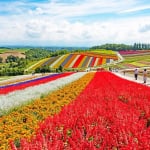
Where will you go for the summer vacation? Introducing recommended spots for domestic travel
-
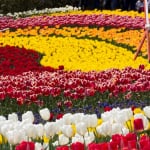
Kaizu City’s Recommended 7 Tourist Spots. Enjoy the Culture and History Nurtured by Wajū!
-
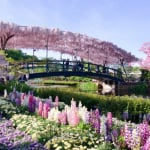
What Makes Ashikaga Flower Park So Special? A Treasure Trove of Photo-Worthy Spots!
-

600 Years of Radiant Tradition: Korea’s Historic Villages of Hahoe and Yangdong
-
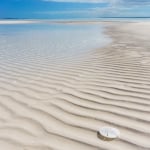
Two-Colored Seas and a Pink Beach! 4 Must-Visit Spots in North Eleuthera
MOST POPULAR ON Guide
-
 1
1Doha: Must-see Attractions in the Capital of Qatar
-
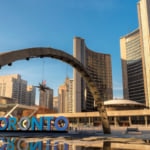 2
2Toronto: 10 Things to do in this Picturesque Canadian City
-
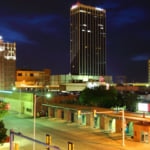 3
3Amarillo: A City Famous for It’s Amazing Canyons, Great History and Music
-
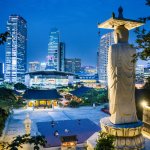 4
4South Korea: Dazzling Scenery, Rich Culture and Fascinating History
-
 5
5Kuwait: A Country in Middle East Asia Famous for Hot Sand Dunes and Stunning Cityscape

